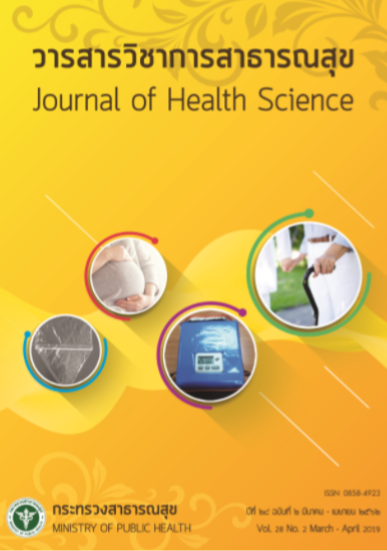Relative Weight for Thai Diagnosis Related Groups Version 6.2
Keywords:
relative weight, diagnosis related groups, Thai diagnosis related groups version 6.2Abstract
Relative weight (RW) is one of the most important tools for inpatient payment based on diagnosis related groups (DRGs). The higher the relative weight, the greater the reimbursement. This article presented a brief technical detail on the processes of RW calculation for Thai Diagnosis Related Groups version 6.2 (TDRGs version 6.2) which has been implemented since 2018. The data for calculation came from claim data of 1,254 hospitals (public and private hospitals) covering three health insurance schemes. There were 21,793,421 admissions, 80.8% from Universal Health Coverage Scheme, 9.7% from Social Security Scheme, and 9.5% from Civil Servant Medical Benefit Scheme. RW calculations employed 7 steps as follows: First step was data checking. The result showed that 69.7% of the data (15,192,170 cases) were completed. The second step was charge standardization by replacement of hospital charges of instrument with calculated room and board charge of all admission. In the third step, statistics outliers by each DRG group were eliminated by removing of all cases with the cost extremely far beyond the norm of each group. Before RW calculation, in the fourth step the average charge of common DRG were rechecked. Step 5 was the calculation of RW by dividing average charge of each DRG group by average charge of all admissions. Then, RWs were adjusted again in step 6 according to the appropriateness of treatment and resource consumption. Finally, the mean of RW for all DRG became one. The final step was the normalization of RWs so that the average case weight after recalibration was equal to the average case weight before recalibration. After all process were finished, the lowest RW of TDRGs version 6.2 was 0.1858 and the highest was 79.3646. Based on the study outcomes, it demonstrated the approach to obtain the RW scores which could be able to reflect the real utilization of hospital resources based on the correctness and completeness of individual claim data covered all hospital levels and group of diseases. In addition, if the standard method of unit cost per DRG study could be able to run in all hospital types, it would be justifiable to develop the Thai DRG to be able to reflect the actual cost of patients care in the future.
Downloads
Downloads
Published
How to Cite
Issue
Section
License
Copyright (c) 2019 Journal of Health Science - วารสารวิชาการสาธารณสุข

This work is licensed under a Creative Commons Attribution-NonCommercial-NoDerivatives 4.0 International License.







